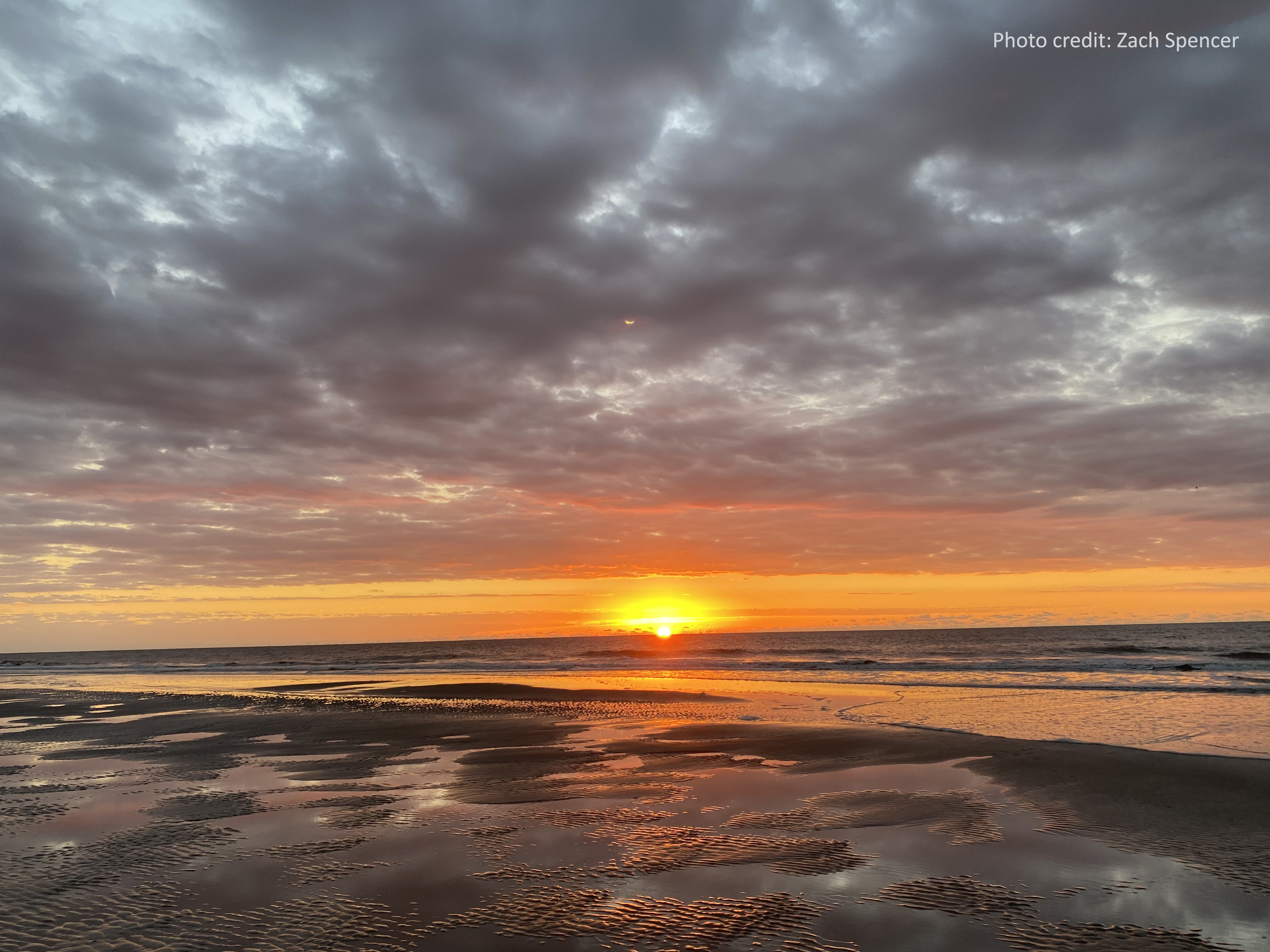States / South Carolina
South Carolina
Coastal Management
The focus is on managing coastal areas to increase resilience, with an emphasis on balancing environmental, economic, and human wellbeing. Mandated by the Coastal Zone Management Act, the two federal programs designed for this task are the National Coastal Zone Management Program and the National Estuarine Research Reserve System. Programs are administered, on the federal side, by NOAA’s Office for Coastal Management, in partnership with the coastal states.

State Programs
Coastal Zone Management
South Carolina Coastal Zone Management Program. Established in 1979, the lead agency is the Department of Health and Environmental Control. The South Carolina coastal zone includes all lands and waters in the coastal counties that contain more “critical areas,” which are defined as coastal waters, tidelands, beaches, and beach and dune systems.
National Estuarine Research Reserves
North Inlet – Winyah Bay National Estuarine Research Reserve. Designated in 1992 and protecting 18,916 acres, this reserve is located in Georgetown County, between Myrtle Beach and Charleston. Most of the reserve is located on Hobcaw Barony, a 17,500 acre property of the Baruch Foundation designated for conservation, research, and education. It includes North Inlet and Winyah Bay and encompasses tidal and transitional marshes, oyster reefs, beaches, coastal forest, and open water. North Inlet is an ocean-dominated estuary that features high water quality, extensive salt marshes, and a small forested watershed that is relatively undeveloped. In contrast, Winyah Bay is a brackish-water estuary that drains four major rivers and is the third largest watershed on the East Coast. Winyah Bay is greatly influenced by forestry and other human activities. (See handout)
ACE Basin National Estuarine Research Reserve. Designated in 1992 and protecting 99,308 acres, this reserve, located 45 minutes south of Charleston, helps protect the natural beauty, abundant wildlife, and unique cultural heritage of the South Carolina lowcountry. The ACE Basin is one of the largest undeveloped estuaries on the East Coast and is named for the Ashepoo, Combahee, and Edisto Rivers. Although largely undeveloped, the area is influenced by growth in nearby Charleston and Beaufort. The reserve protects cypress swamps, historic plantation homes, old rice fields, oyster reefs, and expansive tidal marshes, while providing a variety of outdoor recreational opportunities. (See handout)
Impact Stories
Stories that showcase the recent work of this state's coastal management efforts.
- Restoring Native Grasses and Wildflowers to South Fenwick Island
- Research Reserves Deliver Dependable Data for Our Changing Coasts
- Conserving Iconic Coastal Habitat In South Carolina’s Grand Strand
- Increasing Resilience of Marine Corps Recruit Depot, Parris Island Through Living Shorelines
- Building Community Capacity for Coastal Resilience Planning in Atlantic Coastal Plain
- Building Capacity to Conserve Salt Marsh Habitat within Coastal Communities
- Mingo Creek Tract for Black River State Park
- South Fenwick Island Parcel Additions to the ACE Basin Reserve
- Expanding the Network of Protected Lands along South Carolina’s Black River
- Improving our Coasts with High-Resolution Land Cover Data
- Improving the Resilience of Salt Marsh Ecosystems within the ACE Basin through the Creation of Intertidal Oyster Reef Habitat
- NOAA Strengthens Resilience Before, During, and After Disasters
- NOAA Cheers Citizen Scientists
- Befriending Coastal Birds
Additional Resources
*Fast Fact Sources:
People: American Community Survey Five-Year Estimates
Beaches and Estuaries: Shoreline Mileage of the United States
Employment and Economy:
Marine Economy for the Coastal U.S. States
Marine Economy for the U.S. Territories